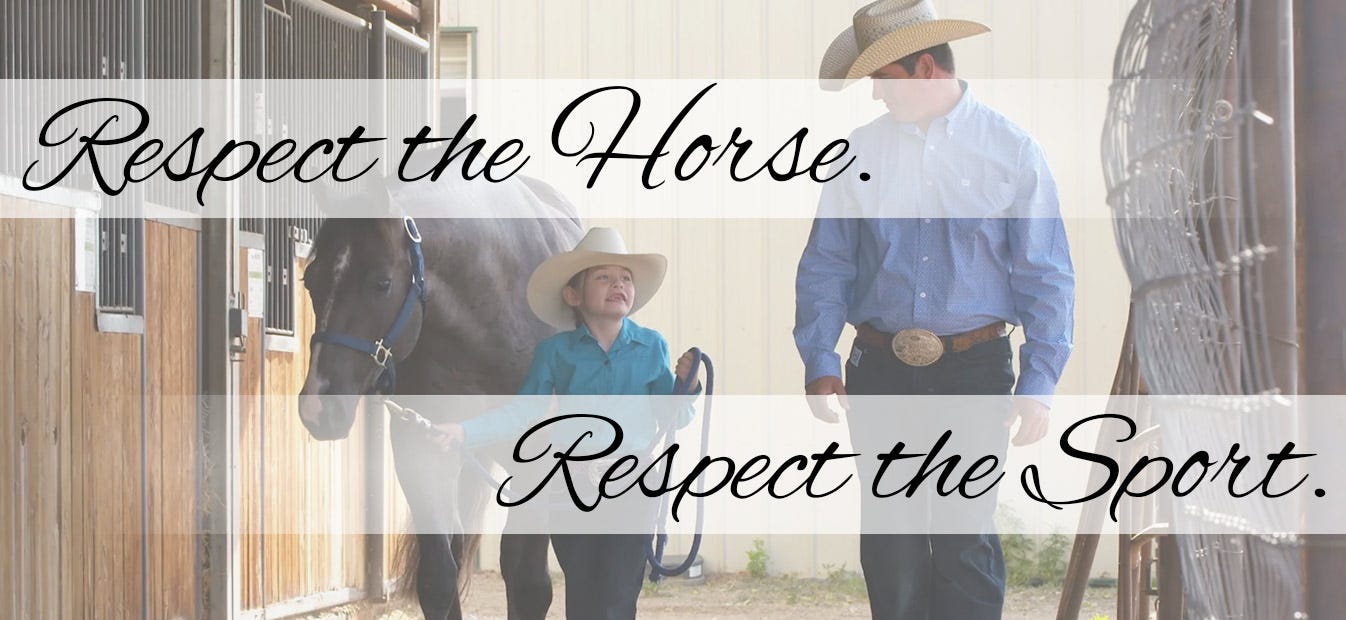Sedated horses are NOT fit to compete
The new NRHA policy that allows horses to be sedated for competitions is dangerous, unethical, and deeply unfair.
Just when you think the horse world has hit rock bottom and the only way to go from here is up, someone starts digging.
The National Reining Horse Association (NRHA) recently updated it’s Animal Welfare and Medications Policy. Among many changes, it now allows Romifidine, a sedative, to be administered 30 minutes prior to competition at 0.5 cc (this equals a low to mid level sedation, according to Sedivet dosage recommendations from the manufacturer)1.
You read that right.
Reining horses in the United States can be competed while under the influence of a medical sedative. Presumably, the choice has fallen on Romifidine because it reportedly causes less ataxia than other sedatives.
Here’s why it’s a bad idea to compete a sedated horse anyway:
Sedatives affect awareness and motor function. Riding sedated horses and asking them to perform advanced movements increases their risk of injury.
Sedatives affect body functions such as heart rate and gut motility, effects which are further compounded by physical effort. This puts enormous strain on the body during the competition, and increases the risk of serious complications such as circulatory failure and colic.
Sedatives are metabolised through the liver and the kindeys. If you compete regularly, and administer sedatives regularly, you force the horse’s organs to work harder than they would need to.
The reason for using a sedative like this is to mask any stess-related behaviours that may affect performance. Using medications in lieu of proper training, for the sake of personal gain, is highly unethical.
It also risks runing the sport, because spectators can never be sure whether the performance they see is authentic or not. In addition, it gives riders who engage in unethical pratices an unfair advantage compared to those who put in time and effort to train their horses and prepare them for the stress of competition.
How could this even happen in 2022, you wonder?
There is a backstory to this rule change, and it’s called politics.
In an open letter, the president of the NRHA, Rick Clark, admits that the Romifidine rule was a compromise in order to effect tougher penalties on other drug violations. He says that without this concession, the board may not have been able to pass any new policies at all: “In order to get any changes approved, we had to compromise. That compromise came in the form of allowing a small dosage of Romifidine.”2
In plain speak, it means that a large enough number of NRHA board members think sedating a horse for a competition is perfectly reasonable, and were prepared to hold other welfare policy improvements hostage to make the practice legal.
It’s clear that this must be a wider issue within the sport of reining, where either a majority or a substantial minority want to be able to sedate their horses for competitions.
NRHA president Rick Clarks says that he “will not be signing permission for the use of the drug on any of my horses”. This is good, as he sets a clear example for others to follow. If he and other prominent NRHA profiles keep speaking up, and veterinarians and ethologists keep highlighting the dangers involved, perhaps the attitudes will change, and with it the rule.
Meanwhile, the NRHA:s official partners, like John Deere, SmartPak and Markel Insurance, need to start thining about whether they want to be associated with this type of competition culture.
And we need to speak up, educate, spread the word, refuse to comply, dissent.
The Romifidine exception can’t be found in either the NRHA European Regional Animal Welfare and Medications Policy or a previous version of the NRHA Animal Welfare and Medications Policy (revised 2017), and is currently listed as a prohibited substance, so this seems, in fact, to be a new rule.
To the Rick Clark’s and the NRHA:s credit, the penalties have indeed been increased quite dramatically, from a mere warning to a $500 fine for a first offense.






It’s also very common for trainers to sedate horses coming back to work after an injury. I see it in the hunter/jumper world all the time. Horse has been on stall rest for a long time and gets sedation for turnout and riding until it is no longer explosive. A sad stand in for proper care and training. Heart breaking to see these big athletes kept in tiny stalls all day and then when returning to work, they are drugged to stay compliant.